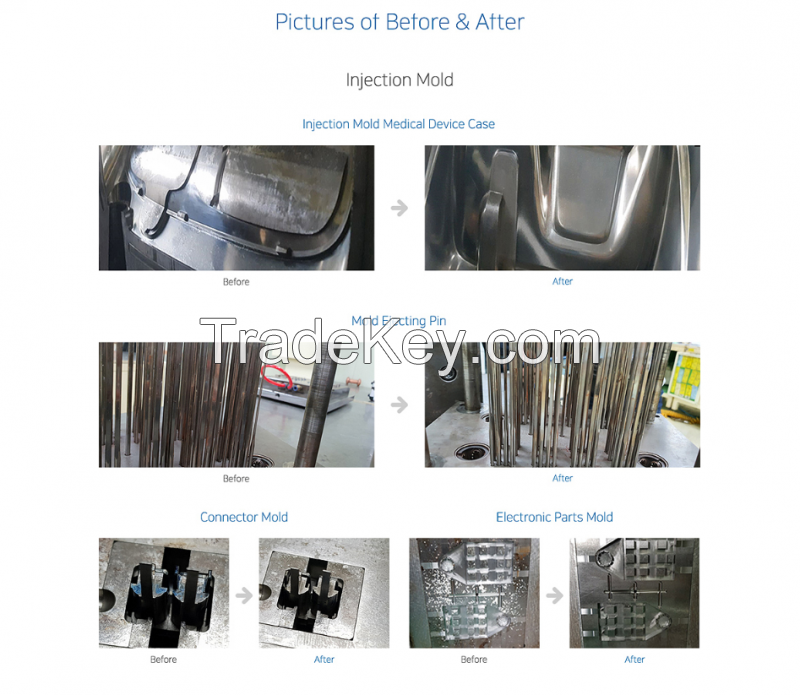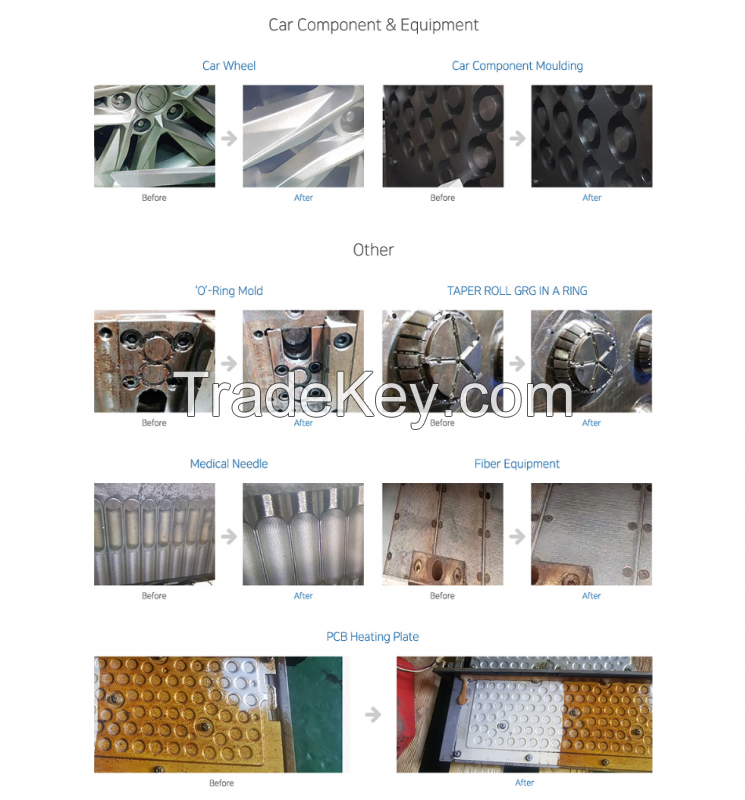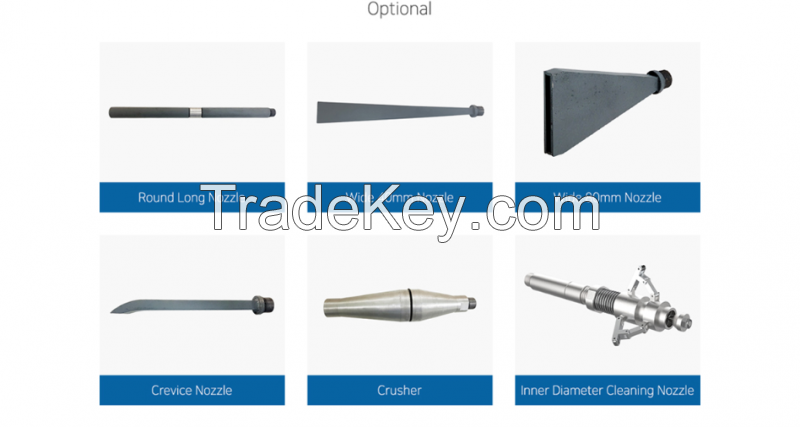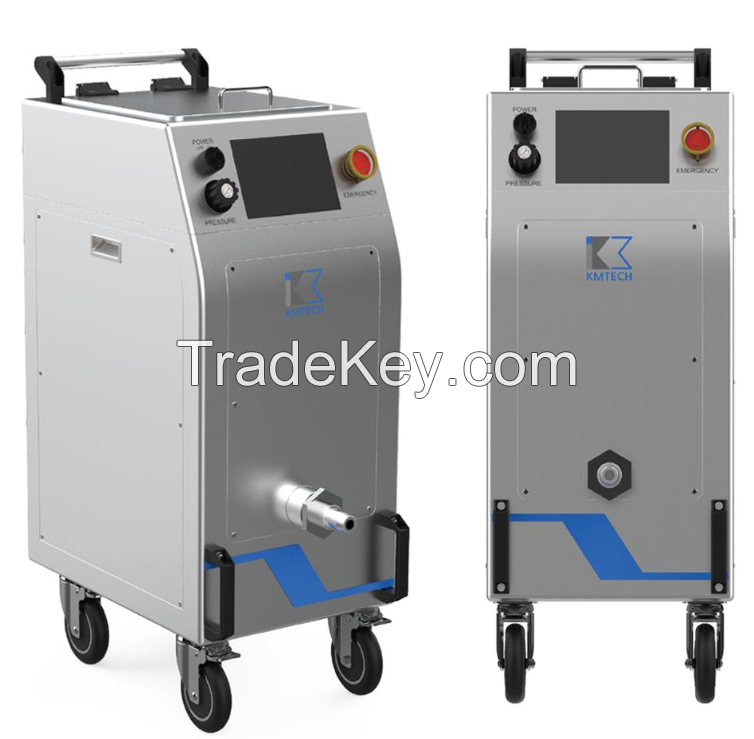Specialized Company for Designing, Manufacturing, and Operating
Dry Ice Cleaning
Dry Ice has a higher cleaning efficiency than other cleaning
machines. It shows outstanding cleaning ability even against
hard-to-clean objects. Moreover, its maintenance and operation
expenses are cheap.
It causes no damage to the parent metal.

Key Features
1. There is a big difference in temperature.
The temperature of ice is 0°C, whereas the temperature of dry
ice is -78.5°C.
It has a very low temperature, and because it has sublimation,
which changes directly to a gas without going through a liquid
state, it absorbs the surrounding heat and lowers the
temperature rapidly.
Therefore, it is widely used as a coolant to keep the
surrounding material cold (fresh food storage, ice cream cold
storage, etc.).
2. Unlike ice, it does not contain water.
When dry ice is left outside, it sublimes and disappears
without leaving any water, which proves that there is no
moisture. For this reason, it is called Dry-Ice, which means
'dry ice'.
3.hardness is very low.
Although there is a slight difference depending on the
temperature and size, dry ice is more easily broken than ice
and has a hardness of less than or equal to gypsum (2
mohs).
4. The change of state at room temperature and pressure is very
different.
This is because ice slowly melts and turns into water, whereas
dry ice is a representative sublimable material that expands in
volume without going through a liquid state and turns into a
gas.
Product Specification
|
Safty Valve
|
9.5bar
|
Vibrator
|
30W
|
|
Hopper capacity
|
25kg
|
Blasting Hose
|
3/4"(Double Special Cloth)
|
|
Motor
|
0.5kw
|
Air supply hose
|
3/4"
|
|
Pellet consumption
|
10~60kg/h
|
Power specification
|
220V, 60Hz
|
Need for Dry ice Cleaning
Need for industrial cleaning /
decontamination
• Dirt, dust, sludge radioactive materials and pollution are
generated when handing various industrial manufacturing
processes and industrial facilities.
• Economic losses due to waste of manpower, delay in
construction delivery, and harmful substances are
generated.
• Necessity of spraying method using tools
-> Spraying : It removes scale, rust, coating film from the
base material by spraying the water with sand, steel, shot,
grit, silica and other abrasives with compressed air.
Major Injection Method Status and Issues
• Sand blasting method : Strongly spraying fine sand particles
with compressed air, etc.
-> A large number of workers suffer from silicon pneumonia
in Turkey's and spraying workshop (Hankyoreh
21-2010.07.02)
• Conventional blasting methods, such as sand blasting, cause
secondary pollutants (environmental destruction and harmful /
carcinogenic substances, etc.) and damage to the base material,
resulting in economic losses.
• It is an indispensable requirement for eco-friendly dry ice
blast cleaning to improve working environment, minimize
environmental damage and economic losses.


Dry Ice Cleaning Method and Characteristics
• Dry ice pellets with hardness of 2 Mohs are sprayed under 5
atmospheres collide with foreign substances in the speed of
300~800 m/s.
• Dry ice pellets are quickly frozen under super low
temperature and give a thermal shock from temperature
difference between cleaning target and pellets.
• Repeated shrinkage and cracking take place due to abnormal
thermal expansion coefficient of the foreign substance on the
material.
• The volume expands by 800 times due to property of dry ice
that permeated through the cracks.
• Dry cleaning is sanitary without humidity and doesn't
generate wastes or waste water causing contamination.
• In case of molds, dry ice pellets can be sprayed directly on
the machine without the need for re-setting after cleaning.
Accessory








